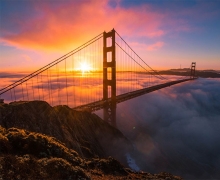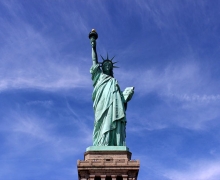10 most spine chillingly dangerous tourist places in the world

10 most spine chillingly dangerous tourist places in the world
Life is all about daring yourself to the craziest of things for at least once in your lifetime. You just need to push yourself a little further to get intoxicated to being adventurous.
Our earth is full of all the unique and amazing things, deemed dangerous because of its natural conditions or wildlife.
Taking a shot from the most dangerously unsafe place in the world, sounds interesting right?
So to all the daredevils out there, get the perfect shot and let the daring dude in you be revealed. Hold tight! Simply scroll down to see the epic locations around the world.
Here are the most dangerous places on Earth that you need to think twice before visiting:
Most dangerous tourists place on earth for a thrilling vacay:
Volcano tours in Hawaii, USA
Volcanic Island tours in Hawaii are one of the best ways to know the volcanic history of Hawaii. When in Hawaii, don’t miss the Big Island tours. The Big Island is the youngest and largest island of Hawaii. Experience and feel the excitement. Get a chance to tour to the most active volcano, Kilauea.
If you are hoping to see lava up close, the best and safest way to get a brief look at the extraordinary is to book a Hawaii volcano tour. The best way is to book a boat or a helicopter or simply hike through the dry lava fields.
Sounds exciting right?
Death Valley National Park, USA
At 282 feet below sea level, bad water Basin is a strange scene that deceives the faculties. What guests botch for snow covering the ground is really a thick layer of salt on the valley floor.
But, how did the salt get there?
Downpour and minerals broke up from rocks channel to bring down heights. Here, at Badwater Basin, the water forms transitory lakes after weighty storms. As the water evaporates, minerals concentrate until the salts remain. After ages of this process, enough salts have settled here at the lower part of the landmass to make this tremendous, strange scene.
Death road, Bolivia
Daredevils from everywhere around the world are cautioned about this tricky road before they embark on a road trip through. Known as the most daring and thrilling road in Bolivia, trekking down the perilous ‘Death Road’ is a definitive extreme sport. However, following 20 years of modernization, the road has become a bit safe.
But the question is how safe it is truly?
Snake Island, Brazil
Around 90 miles off the southeastern coast of Brazil, there is an island where no local could at any point dare track. Rumors have spread far and wide suggesting that the last fisherman who wandered near the shores of Snake Island was found days after, lying dead in a pool of blood.
This puzzling island, also known as Ilha da Queimada Grande, is considered so dangerous that Brazil has made it illegal for anybody to visit.
Know before you visit:
Also, the danger on the island comes as the golden lance head pit snakes - one of the deadliest snakes in the world.
Natron Lake, Tanzania
Did you know??
Lake Natron in northern Tanzania is a salt lake, implying that water streams in, however doesn't stream out, so it can escape by vanishing. After some time, as water dissipates, it abandons high fixations of salt and other minerals, like at Utah's Great Salt Lake and Dead Sea.
Lake Natron is a hyper saline and exceptionally alkaline lake situated in the eastern segment of the East African Rift. Tanzania has something like four alkaline lakes, however Lake Natron is the most well known.
Another interesting fact:
This lake can be a death trap for some birds. The mirror-like surface fools them into jumping into the red waters for food. They suffocate in the toxic mixture, and their exterior and internal parts calcify.
The Darvaza Gas Crater, Turkmenistan
The crater was made in 1971 during a Soviet drilling mishap that hit a gas cavern, causing the penetrating apparatus to fall in and the earth to implode under it. To keep the hazardous exhaust from spreading, the Soviets chose to consume off the gas by setting it ablaze.
The pit has been burning from that point onward and past endeavors to put it out have been fruitless. The subsequent crater 70 meters (229ft) wide and 20 meters down - is a well known vacation destination in the ex-Soviet country.
Danakil Desert, Ethiopia
The Danakil Desert is a desert in upper east Ethiopia, southern Eritrea, and northwestern Djibouti. The region is known for its volcanoes and outrageous intensity, with daytime temperatures outperforming 50 Degree Celsius. This triangle extends across 100,000 square kilometers of arid territory.
The Danakil Desert is one of the lowest and hottest places on the planet. Millennia prior, the Danakil Desert was important for the Red Sea. However, volcanic eruptions shaped rock barriers and made an inland sea that ultimately vanished in the extraordinary intensity. Huge salt pads and salt lakes remain and are as yet mined by the itinerant a remote place clans, who transport salt chunks from Danakil by camel caravan.
Madidi National Park, Bolivia
Madidi is a National Park in Bolivia that was laid out in 1995. Alongside Manuripi-Heath, Apolobamba, and the Manu Biosphere Reserve, it’s quite possibly of the non-adjoining region in Bolivia and on the planet.
Madidi and its adjoining parks are probably the most naturally assorted places on the planet. A few specialists guarantee it's naturally the most different on earth.
Naica Crystal Cave, Mexico
Its crystals were up to 14 meters in length and two meters thick are found inside the cave so unfriendly that nobody can be inside the cave for than an hour. The entire world was shocked when the photos of the Naica Crystal Cave became a web sensation. It covered 300 meters beneath the earth's surface.
Naica's Cave of these precious stones is a magical discovery. Some of these heaviest crystals are assessed to gauge as much as 55 tons.
Oymyakon, Siberia
The city of Oymyakon, Russia is located close to the Arctic Circle. It is the coldest inhabited area. Only around 500 occupants live here. In winters, the average temperature is around -58°F. The occupants are courageous enough to overcome the chill.
Most of these residents are native individuals known as the Yakuts, yet a few ethnic Russians and Ukrainians live nearby. During the Soviet era, the government persuaded laborers to move to the locale by promising them high wages for working in an unforgiving environment, But this unfortunately hasn’t happened as promised.
Don’t you want to visit this unbearable coldest inhabited region?

- San Francisco, Las Vegas, Los Angeles, international
- Inclusion:





- INR :86790/- pp

- New York, Washington, Niagara Falls, international
- Inclusion:





- INR :87450/- pp


